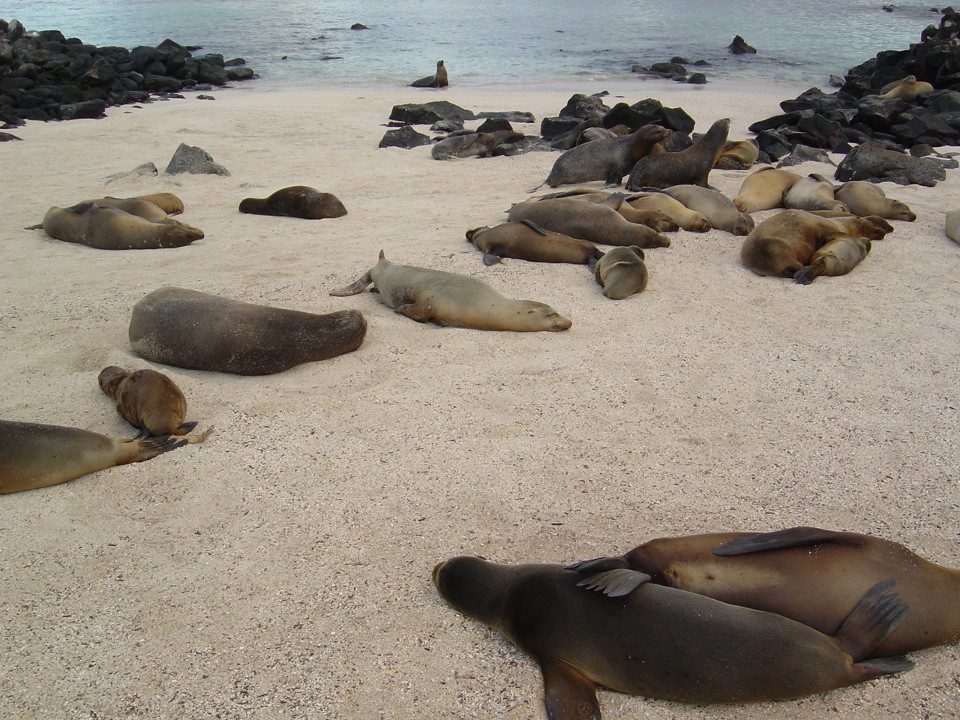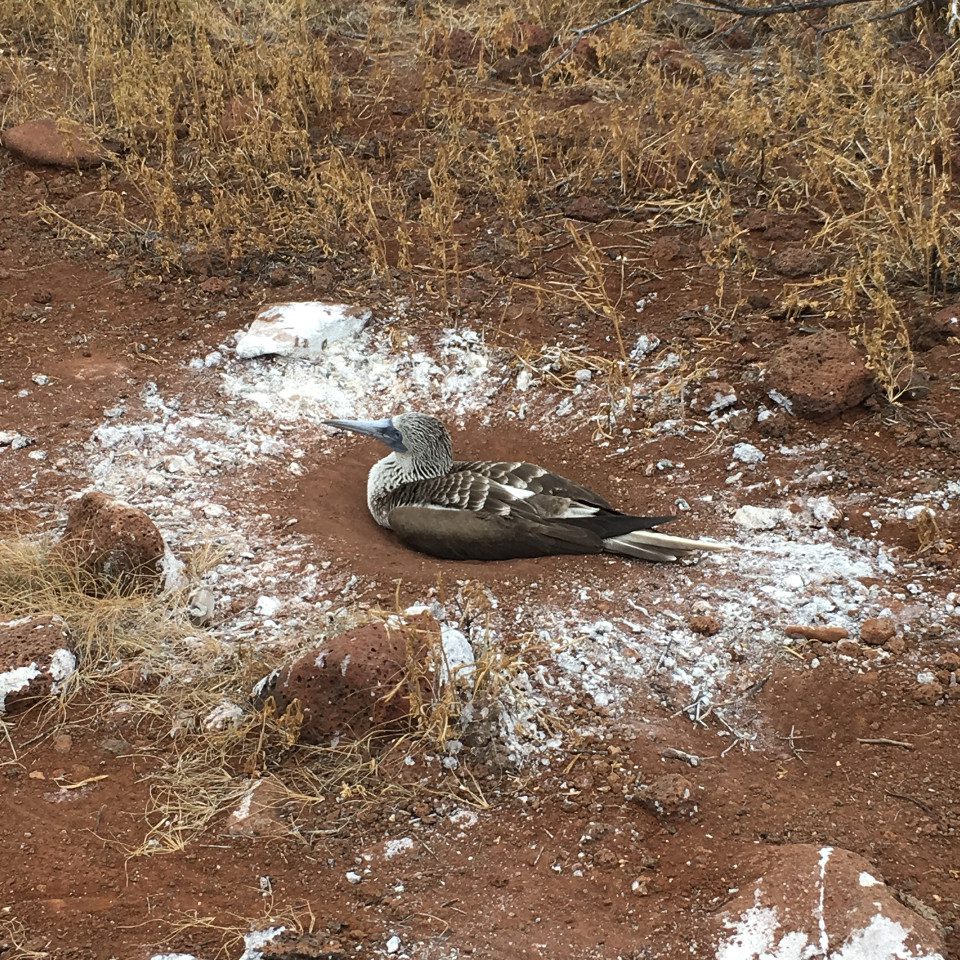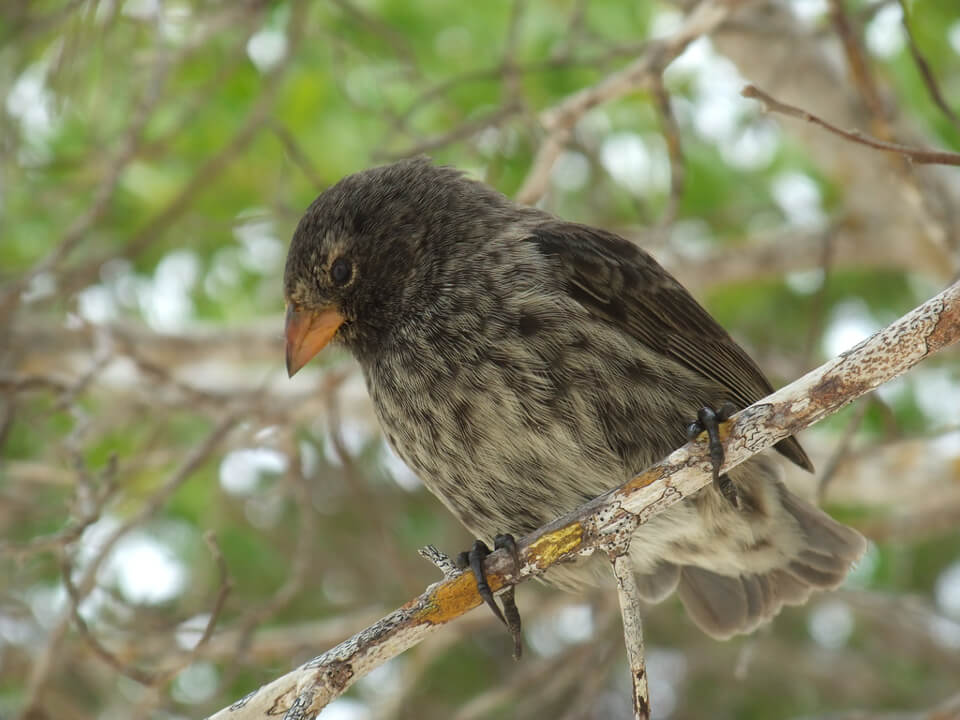The Galapagos Islands are not your average equatorial archipelago in more ways than one. It is commonly known that this “living laboratory” contains life found nowhere else on earth; however, what strikes many visitors upon landing on the islands is the vegetation and climate they come across. Instead of thick jungle and sweltering heat, many of the islands are laden with cacti and volcanic boulders, while others sprout huge forests where giant tortoises lumber in the cool shade. Keep on reading to learn about the habitat zones of the Galapagos Islands.
TALK TO A DESTINATION EXPERT

Diego Zapata

Rosa Mena

Sandy Lara

Diego Zapata

Rosa Mena

Sandy Lara
The islands have an extensive range of ecosystems primarily due to the varying altitudes and three major ocean currents that pass through them. Depending on the elevation of the islands, the temperature of the ocean current, and the nutrients it carries, so varies the climate, and plant and animal life. This rich diversity is one of the iconic features that dominate the archipelago. Although these habitat zones can be difficult to define due to the transition vegetation between each one, experts have generally identified three central habitat zones: shore, arid, and humid.
Shore Zone

The shore or littoral zone is a narrow stretch of salt-ridden land that lies between the sea and the arid zone. Rocky cliffs or beautiful sandy beaches dominate the shores, home to lava lizards, geckos, and snakes, as well as the famous marine iguana, which can often be seen basking in the warm sun. However, one of the largest and most numerous residents is the sea lion, difficult to miss even with your eyes closed. However, beach life is not necessarily an easy one. In order to survive the high levels of salt and lack of freshwater, shore vegetation must be extremely hardy, thus shrubs or mangroves often dot the shore. Herbaceous plants such as the beach morning glory can also be found in this region, as they have evolved to adapt to these harsh conditions over the years. A particular treat this habitat offers, for example on the Rabida and Santa Cruz islands is the occasional saltwater lagoon where visitors have the opportunity to enjoy a rich array of birdlife, wading in the pools, and feeding on their nutrients.
Arid Zone

Upon arriving at the islands, the first thing many unsuspecting visitors notice is the arid environment that pervades much of the islands. The arid zone is the most extensive of all habitat zones in the archipelago; lying at an elevation of between 80 and 200 meters above sea level, it is found on all of the main islands. On some of the low-lying islands where the peaks are not high enough to break the cloud cover, it expands over almost the entire island such as on Pinzon.
This zone is primarily characterized by cacti, deciduous trees, shrubs, herbs, and xerophytic species such as Palo Verde and Palo Santo. One of the more colorful aspects of this ecosystem is the multitude of land birds that have made their home here. Also, depending on the time of year, seabirds such as blue-footed boobies and storm petrels use this land as their nesting site, and the area becomes full of fluffy chicks, wobbling around the land iguanas and lava lizards that lounge along paths and volcanic boulders. Life in this zone has adapted specific traits to survive with little water. For example, xerophytic plants are adapted to conserve and store water, and they are even able to effectively shut down their metabolic system. Other plants are characterized by small leaves and deep roots and are typically spaced out in the competition for freshwater.
Humid zone

However, for those that arrive at the equator in search of, well, the equator, do not despair. Moving farther up to approximately 300 meters above sea level, the arid zone transitions into a humid zone thanks to higher moisture levels. Even during the dry season, the land stays relatively damp due to the famous Galapagos garua fog that hovers over the island in the night and throughout a large part of the day.
This zone is rich in plant and animal life, including Darwin’s Finches. Scalesia forests that grow up to 20 meters (60 feet) high dominate the first 300 meters. Beyond this, at about 600-700 meters above sea level, trees are replaced by smaller shrubs, forming the Miconia zone (only Santa Cruz and San Cristobal islands have an elevation high enough to host it; Miconia and Scalesia are names of predominant plan genera). Rising even higher (900+ m) is the pampa, the wettest, highest and rarest zone, characterized by ferns, grasses, and mosses. This region is also gifted with a remarkable 11 species of orchids and endemic tree ferns, which can grow up to three meters (9 feet) tall.

Javier Garcia

Eduardo Silva

Carolina Escobar
START PLANNING YOUR TRIP

Javier Garcia

Eduardo Silva

Carolina Escobar
Get in touch for more
CONTACT US


